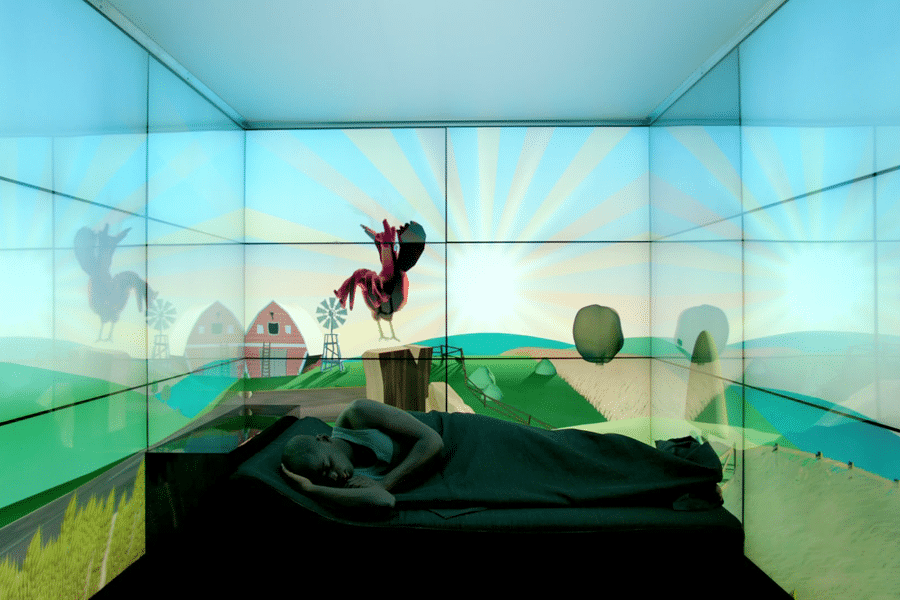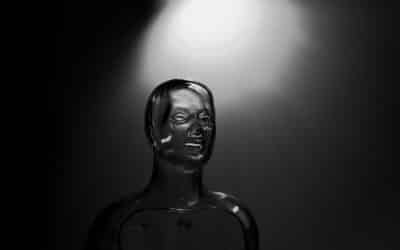
Technology in Horror
The landscape of horror fiction is morphing, and technology is the new bogeyman. Gone are the days when creaking doors and flickering lights were the main sources of terror. Today, horror writers are turning smartphones, AI, and the dark web into sources of unimaginable dread. This shift reflects our deepening entanglement with technology and its potential to turn from a tool into a tormentor.
Take Stephen King’s novel “Cell,” where a mysterious signal broadcast over the global cell phone network turns users into mindless killers. King, a maestro of horror, taps into the ubiquitous presence of mobile phones in modern life and twists it into a conduit for horror. The novel is a chilling reminder of our dependence on these devices and the latent fear of them turning against us.
Mark Z. Danielewski’s “House of Leaves” delves into the darker sides of technology, though not in the conventional sense. The novel’s labyrinthine structure, footnotes, and unconventional layout challenge the traditional format of books, much like how technology has disrupted the traditional ways we consume information. The book itself, in its physical form, becomes a piece of haunting technological art.
In film, “Unfriended” and its sequel “Unfriended: Dark Web” take the horror online. These films unfold entirely on computer screens, a concept that turns everyday tools of communication into platforms of terror. The movies tap into the fears surrounding online privacy, cyberbullying, and the unknown reaches of the dark web, turning familiar digital interfaces into sources of suspense and fear.
The advent of AI and robotics has also opened a new avenue for horror. Alex Garland’s “Ex Machina,” for instance, explores the fear of artificial intelligence through the story of a humanoid robot. The film delves into the ethical and existential questions surrounding AI, cloaked in a suspenseful narrative that keeps viewers questioning the nature of consciousness and the perils of playing God.
Augmented reality (AR) and virtual reality (VR) have also found their way into horror narratives. The novel “Daemon” by Daniel Suarez presents a world where AR technology is used for a sinister and deadly game. The blurring of lines between reality and virtual reality in the novel is a commentary on how these technologies could potentially distort our perception and understanding of the real world.
The small screen has not been immune to this trend either. The anthology series “Black Mirror” often portrays technology as a double-edged sword, capable of both enhancing and devastating human lives. Episodes like “White Bear” and “Shut Up and Dance” showcase how technology can amplify human frailties and societal flaws, turning them into nightmarish scenarios.
The role of social media in modern horror is also noteworthy. In the film “Friend Request,” social media becomes a breeding ground for supernatural horror. The movie taps into the anxieties surrounding online personas, social isolation, and the dark side of digital connections. It’s a stark reminder of how platforms meant for connection can become instruments of alienation and fear.
Even podcasts have embraced the theme of technology-gone-awry. “Rabbits,” a podcast narrative, uses the format of investigative journalism to explore a mysterious game that’s supposedly been altering reality through the decades. The podcast blends elements of tech intrigue with suspenseful storytelling, using a modern medium to deliver an age-old sense of dread.
The intersection of technology and horror in fiction is not just about scaring the audience with new gadgets. It’s a reflection of contemporary fears and anxieties. As technology becomes more integrated into our lives, so too does it become more enmeshed in our fears. Horror fiction acts as a lens, magnifying these fears and exploring their potential consequences.
The genre’s shift towards technology-centric narratives is a testament to its ability to adapt and evolve. Horror has always been about exploring the unknown and confronting the things that scare us. In an age where technology is omnipresent, it’s only natural that it becomes a source of horror. This trend in horror fiction is a mirror held up to society, reflecting our ambivalence about the very tools that have become central to our lives.
As we march further into the digital age, the line between humans and technology blurs, and with it, the potential for new kinds of horror. The genre’s exploration of technology is not just about the gadgets themselves, but about our relationship with them. It asks what happens when the things we create to serve us start to control us, or worse, turn against us.
In conclusion, the role of technology in modern horror fiction is multifaceted. It serves as a setting, a plot device, and a symbol of contemporary fears. From smartphones to AI, the internet to virtual reality, technology has become both the medium and the message in horror stories. As long as technology continues to evolve and permeate our lives, it will continue to inspire horror writers to imagine new terrors, reminding us that sometimes the scariest things are the ones we know and use every day.
More Horror Features
Time Travel Elements
The Machine, Busting the Space-Time Continuum, and Immortality
Space Opera Thrillers
Nail-biting tension in worlds of spaceships and doom
Artificial Intelligence in Thrillers
AI and Identity in Thrillers



